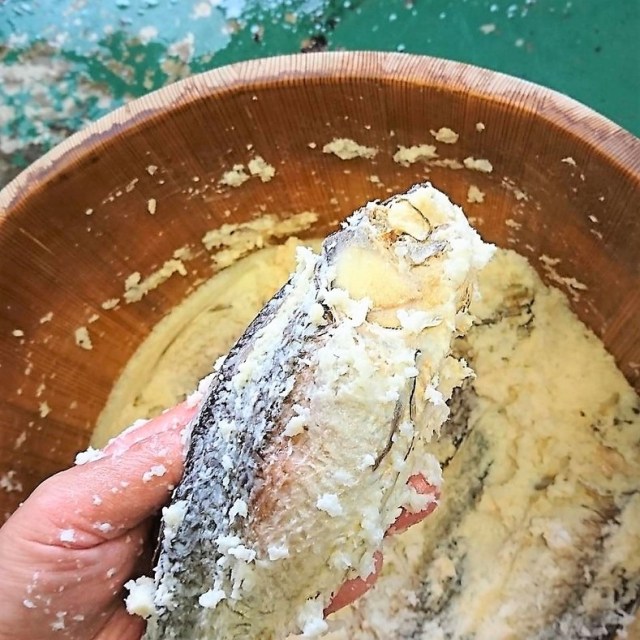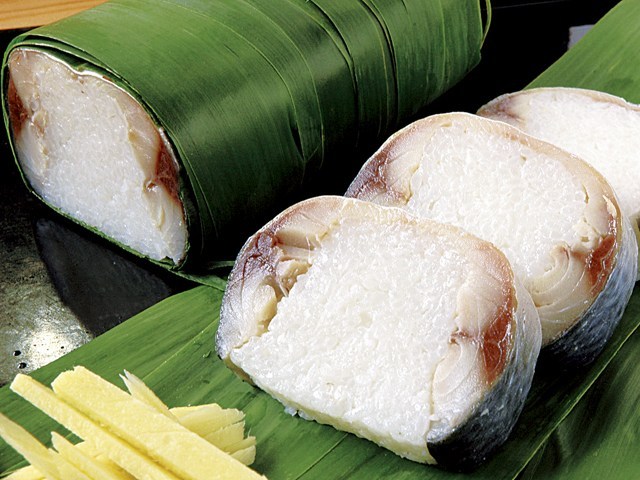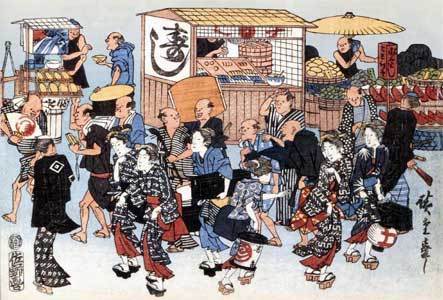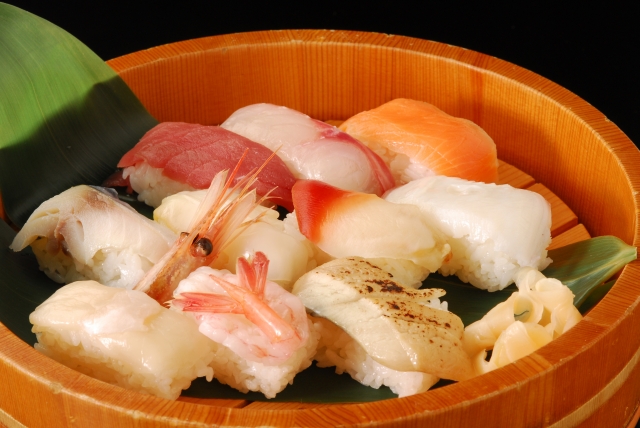
Sushi is one of the Japanese cuisines combined with rice and seafoods. There are many Sushi restaurants everywhere in town.
Recently, from the impact of becoming the World Heritage, there are many Sushi restaurants in overseas and get attention from people in there.
Actually, not only the Sushi style which is popular in Japan also other region like above picture, but also there is another style of sushi which is a kind of preserved food with fermentation.
Also let us dive deep into the origin of Sushi too, you may think Sushi was borne in Japan, but actually it’s not, Japan isn’t its origin.
In fact, even though no one has found the receipt so far that indicates Sushi was existed though rice ball fossils have been discovered from the shell mound, trash box at that time, from Yayoi Era.
So today, as the titled says I checked the history of Sushi.
I’m going to write about the history of Sushi which Japanese think they know but, actually, they don’t.
Before Edo era
It has been considered the origin of Sushi is in South East Asia. the origin of Sushi was a long- term food storage method which is mixing fishes with grains carried out by mountains ethnicity in there.
This method was shared from China to Japan during Nara Period and it is regarded as the beginning of Sushi.
Actually there was a following description about Sushi in Buyakuryou(賦役令) which is a book written in A.D.718.
「鰒、鮓、貽貝、鮓のほかに雑鮨が見える」(In addition Sushi sardines, sardines, mussels, and sardines are seen.)
Also, following is 「令義解」;Ryounogige, which is also a book written in A.D.833.
「鮨また鮓なり」(Sushi(鮨) is also Sushi(鮓) )

After that, the words Sushi (鮓, 鮨) are used a lot in other literatures. Even though, the two characters has different meaning; 鮓 means a fermented fish , and 鮨 means salted fish, however both of them are similar meaning in Japan at that days.
The word Sushi (鮓)mentioned here is regarded as Narezushi(なれずし) which is cooked by pickling and maturing fish with salt and rice as a preserved food.

In Nara period, not only people in Kyoto and Shiga but also people lived in Tokai region and West Japan made Narezushi and pey the tax with them instead of money. However, only limited people such as aristocrats of the Imperial Court or a few high-ranked monks could eat it, ordinary people couldn’t eat it at all.
Sushi at that time was called Narezushi and different from what typically we call “Sushi” nowadays.
Funazushi from Shiga prefecture, Heshiko from Fukui prefecture, Kaburazushi from Toyama and Ishikawa prefecture follow similar cooking methods with Narezushi.
In Muromachi Era, though recipe of Narezuzhi hasn’t been changed, but people started eating it around 10 days which is period before the smell transfers to the rice, even as typical Narezushi is fermented for between 3 weeks to 3 months.
This way of eating is called Nama(Raw) Naresushi 「生なれすし」or Han Nare「半なれ」compared to Narezushi.

Compared to Naresushi, the good point of the Nama Naresushi is not only the fish was fresh, of course, but they could eat it with rice, as rice of Naresushi was not eaten as it got fermented well.
As for the ingredients of “Nare-zushi “, the trend of them had spread not only fish but also vegetables and mountain herbs.
Moreover, in the Kansai region, the other way of making sushi had spread. First, marinate fish and vinegared rice in sushi oke(a wooden bowl for sushi). Then, put on the lid and place a weight upon it. This procedure makes rice more tasty with sour flavour and is the origin of “Hako-zushi “ or “Oshi-zushi”.
So it can be said that Nama Naresushi is the origin of current Japanese sushi style.

After the Edo era

Around the Azuchi-momoyamama era when Japan made vinegar for the first time, “Haya-zushi “ had been made gradually. It is that people put seafood directly on vinegared rice.
Soon, when Japan was in the Edo period, “Nigiri-zushi” which was the most common style of sushi had appeared.
There are two rumors about the founder of “Nigiri-zushi “. First is Hanaya Yohei who opened Yoheizushi which is one of the Edo three sushi. The other is Sakaiya Matsugrou who established Matsuno-sushi. Both sushi restaurants are said to be Edo three sushi flourished during that period.

Then, let’s discover what sushi was like in the Edo era.
First of all, nowadays, most people like “Tuna” or “Fatty tuna” but Edokko ( a nickname of people in Edo) did not buy those because they were too greasy. Instead of them, people seemed to be fond of seafood such as shrimp, gizzard shad, egg, sea bream and conger eel. For your information, tuna was not so expensive that each family marinated tuna and had it by themselves.
Moreover, at that time, since it was common to marinate fish with soy sauce due to the undeveloped frozen technology, sushi had already been tasted. People did not have to puy suhsi on soy sauce.
Next, the size of sushi is remarkable. Compared to sushi nowadays, sushi at the Edo period was twice as big as the current one. It was same as one onigiri. How big it was!
In terms of the price, can you imagine how much sushi was in the Edo period? For now, sushi is around 150 yen for 2 pairs of it. In the Edo period, it was a little bit expensive.
It seems that people used to eat it at the food stall on the way home from work like above picture.
In addition, before new style Nigiri Zushi get popular around Edo era, the kanji of “鮓” is mainly used for fermented sushi like nare-zushi, so the people in edo area(Now Tokyo area) stated to use “鮨” for nigiri style sushi, and one more character “寿司” is appeared in Edo era, the first character “寿” means like “longevity” or “congratulations”, and second character means “present” or “offer”, so “寿司” means to present congratulations or longevity, so it is a kind of superstitious, as this is come from that Sushi is one of best valuable present in Edo era.
After World War Ⅱ
The situation after World War Ⅱwas extremely strict about the food management system and it not was not allowed to be in business.
In 1947, Sushi experts restarted running their restaurant but how did they do it under such a strict rule? That is, sushi processing on consignment. It is a kind of system that sushi experts trade 10 pieces of sushi including a roll for one cup of rice(about 150g). This is how they were able to restart their shop.

The note for you is that still we might be following the portion at that moment, so if you order a Sushi for 1 person, the box would include 10 pieces Sushi still now.
Later, when there had been a rapid economic growth in Japan, sushi was recognized as a high-class dish because of food safety management. The trend at that time was like fancy sushi restaurants where workers went as they wanted to have something special such as time, atmosphere and cuisine.
While in that trend written above, the new style of operating restaurants appeared in 1958. That is “Kaiten-zushi”. The plates went around the room on a belt. The first restaurant was opened at Osaka and named “Mawaru Gannroku zushi”. The appearance of Kaiten-zushi was considerably innovative because the price was cheap and people were able to take out sushi. “Kyotaru” and “Kozou zushi” were one of the still famous sushi restaurants which took in a conveyor belt. Around the 1980s, owing to the development of refrigerated technology, sushi had spread among local people rapidly.
In modern world, 寿司 is called SUSHI and loved by many people all over the world.
Let me conclude the story of sushi, Sushi is starting from “鮓” as a fermented food before Edo era, and then with improvement of food storage quality, it become able to eat raw fish with keeping good quality, started to eat raw fish on rice and it become “鮨” as nigiri zushi before Edo era. And finally, Sushi get popular and Sushi gets a position of celebration food, so Sushi become “寿司”.
Also the Sushi style with raw fish on a rice ball was started in area of Edo(Tokyo now), so we sometimes call this style as “江戸前鮨” and many restaurant still using “鮨”. In other hands, the another style of sushi with fermentation was spread out from western Japan, so “鮓” is more popular in western area of Japan, and Sushi style also slightly different, also sometimes western Sushi feel more sweet as of the style difference.
Finally, how do you feel and what have you learned about the long-long history of sushi?
Most people can understand that the fish storage system in East-South Asia has developed uniquely in Japan though a long period of time.
The most surprising was the size of sushi was almost the same as that of a rice ball and someday, I want to have it.
Thank you so much for reading today. Hope you can enjoy having sushi!